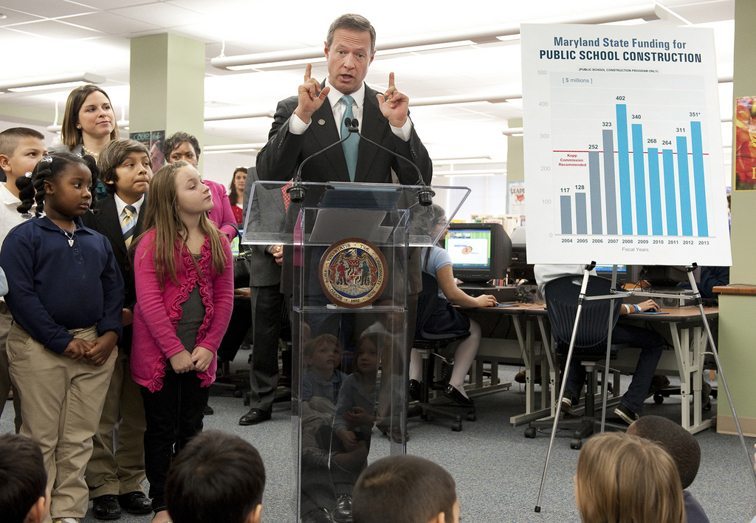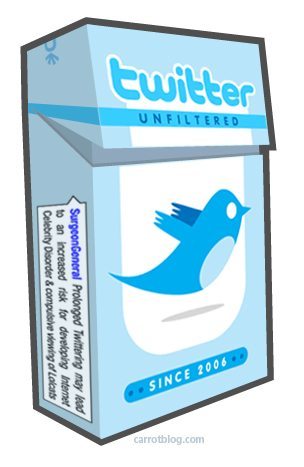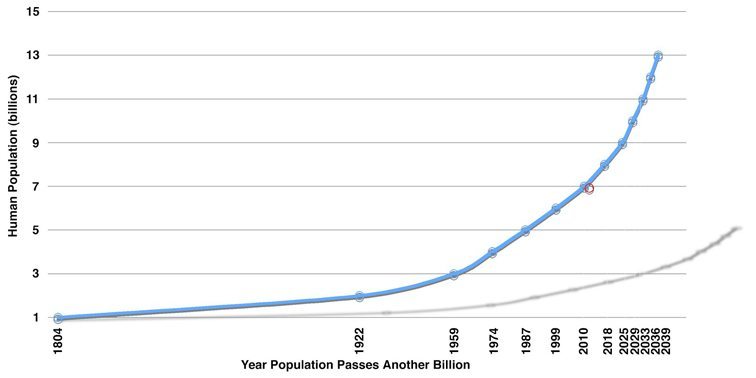Preface:?
What follows are ideas that seek to explore the intersection of culture, learning, and technology. A few tidbits:
1. It is quite long?essentially a short eBook shoe-horned into a blog post.
2. It may not be of general interest. That?s okay.
3. It is structured through short propositions that sketch out where we are, and what lies ahead.
4. It is obviously heavily subjective, and isn?t intended to be a final word on the topic, but a conversation starter about the need for education reform in light of tremendous social changes (including social addiction to digital technology), while also clarifying an urgency that doesn?t seem as widespread as it might.
5. Most of it is subjective. You may not agree with every idea. Or any idea. That?s also okay.
6. In the end, it functions as an ambitious unifying vision of culture and education that, like any expression of similar ambition, falls short in spots. That?s okay as well.
7. When the final version of this is ready for publishing to a mass audience, we will make it available for free to all TeachThought readers in pdf and eBook form.
With that in mind, read on.

Where We Are
In many countries globally, public education is the largest source of formal learning.
Public education is tragically mediocre, as are most institutionally-centered formal learning processes.
?School? has become more of a cultural construct than an authentic environment of learning or self-discovery.
Its industrial approach to the learning process is not only dated, but borderline irresponsible in the face of shifting information power sets.
Most stakeholders in the field of education?crucially learners and their families?are unclear what the characteristics of ?quality learning? might be. Success herein is therefore externally ascribed by biased evaluators (teachers, districts, Department of Education, etc.)
This causes the depth of formal education?s mediocrity to be veiled by a culture itself brought up through the same system.
Not only does this reduce credibility, but capacity: families no longer are vested in the learning process beyond learning outcomes themselves. The locust of control is therefore institutional, not familial. This is erosive.
Social media has incredible potential to increase the transparency of the learning process to promote not an atmosphere of ?accountability,? but true community. As a consequence, net capacity from all stakeholders can be increased.
De-personalized, mediocre education can be worse than none at all. Learners may blame the goal (learning and understanding) rather than the process itself (formal education). In this way, they kill the messenger.
Public education is a product of cultural infrastructure.
Therefore, culture?the art of society itself?owns this problem of mediocrity.
Authentic learning results in personal or social change. (This is math, not rhetoric.)
Local placement and community are each key to context and healthy interdependence.
This concept of ?local placement? is paramount in an increasingly digital & global society.
As competition for attention and image increase, individual habits adjust in parallel. This can result in individuals becoming overly busy collecting resources and consuming increasingly non-substantive, accessible, and fragmented media.
As technology evolves, so do avenues of self-expression (media forms).

The Role of Media
With rapid and constant media form change comes the possibility of distraction towards the form and rather than the need for form.
This is propagated by wasteful tendencies towards resource consumption. (This includes those infinite and abstract, as well as those finite and concrete.)
The Information Age is radically accelerating idea exchange, with social media only among its most recent incarnations.
Informal learning offers a possible pathway to reform?and ultimately develop new forms of?education. (Social media is a strong potential tool in this new development and application.)
This necessarily results in value exchange and inevitable intellectual assimilation.
Intellectual equilibrium is not a positive. Cognitive agitation is critical to evolution?or in more neutral terms, ?change.?
Self-duplicating and self-referential media does not ?help? here.
While information itself has become its own resource, this is an unnatural resource often alien to its applied context.
In a culture dominated by social media, the process of curating and disseminating the information becomes as much an art as the creation of the information itself.
This has the potential to encourage self-duplicating and redundant media, promoting the velocity of information.
These pursuits can both promote and obscure interdependence, placement, and reflection.
Obscured interdependence has the potential to disrupt not simply individual pathways, but family place within a community, which can depress social and societal values, character, and large-scale inertia of the ?hive? itself.
Connectivity within this ?hive? is in itself involuntary, but willful (i.e., self-aware) participation must be chosen.

The Collision of the Economic and the Intellectual
Capitalism provides tremendous wealth to those in power, and possible pathways to wealth for all.
Though statistics can be manipulated and interpreted ?flexibly,? it is a fact that the vast majority of the planet?s wealth and resources are controlled by a very narrow few.
The competitive nature of Capitalism creates a culture of both exploitation and hording. This tendency is universal, with individuals reaching out to accumulate, curate, and store whatever they find power in.
Power historically comes from image, position, and formal currency. In lieu of these sources, non-traditional power sources will flower.
This can include self-worship and self-denial, which occur through media consumption habits.
Any kind of wealth widens the disparity for the social and individual experience.
This can deepen social divisions that might otherwise be healthy.
Addiction and intellectual depression are natural symptoms of an unhealthy community.
Media use is a natural reaction to curiosity, and the contextual need for information.
Media abuse can be defined as the reckless consumption of media that may threaten other personal goals or social placement.
In the presence of extraordinarily high volumes of accessible and consumable media, users tend towards highly-consumable, passive media.
This depends on ?the hive,? and sharing processes, and may circumvent traditional ?natural selection? patterns for media forms.
This media abundance supports ?highly-consumable? media forms that would tend to diminish reading capacity and stamina for individual media in favor of idea connectivity, sequence, and tangent topics.
This favors the pervasiveness and ?popularity? of ideas over depth, as well as the addiction to discover ?related? and intertextual media forms.
In cases where ?total cognitive expenditure? (and dwell time) with a media is sustained, any social component to said media can both deepen the understanding, or provide the illusion of intellectual competition (via rhetorical position) that distracts from original sources, contexts, and objective analysis. This is a form of intellectual self-worship.
Abundance leads to devaluation. Therefore, information abundance can also lead to a de-valuing of information.

Biology
Our planet?s population growth is staggering.
According to a wealth sharing report by Columbia University, ?the adult population has more than tripled from about 60 million in 1916 to over 200 million in 2000.?
According the United Nations report on anticipated population growth between 2000 and 2050, the world?s population is predicted to grow 47% between now and 2050.
This equates to an additional 57,000,000 people per year, more than half a billion every 10 years.
This swelling of the human race is so overwhelming that it?s difficult to comprehend.
When things are difficult to comprehend, people?especially busy people already overwhelmed with more numerous problems on a smaller scale?minimize, rationalize, and prioritize. The latter, however, is impossible without authentic understanding.
The inertia?or its twin, momentum?of more than 6 billion is impossible to measure, much less comprehend.
In light of social challenges on this scale, infinite resources (e.g., information) can and should protect finite resources (e.g., food).
Increased volume of information doesn?t necessarily yield increased quality of information. It does, however, encourage greater reader accessibility.
The long-term effects of increased consumption of briefer, ?high-velocity? media forms is unclear, as it depends on the function of that media: to orchestrate an original idea, to promote an existing ideas germination, or to simply cater to whimsy.
In October 2011, over 20,000,000,000 videos were viewed on YouTube?nearly 46,000,000,000 on the internet overall. Many, many?billions. (?Baby? by Justin Beiber? Steamrolling towards a trillion views.)
Consumption of digital media is lubricated by social media.
As individual habits change, social habits adjust in parallel (think school of fish).
Humanity
Human capacity to analyze and empathize is finite.
This suggests priority and thoughtful interdependence.
Adaptation is inevitable. Individuals consciously adapt based on perceived need. If there is no perceived need (in a ?comfortable? culture of abundance), the pathways to change can be chaotic and selfish.
Suffering is part of human existence, and cannot be avoided.
Suffering of children is less tolerable than suffering of adults. This is both an emotional (instinct) and practical (generational efficacy) concept.
Media forms throughout recorded history reflect universal human emotions of desire, suffering, interdependence, and rebellion.
A culture that is social primarily via media will tend towards rhetoric and form.
One social ill (e.g., poverty) can intensify another (e.g., illiteracy). In the same way, access to information can intensify existing divisions of every kind.
This macro-level of change is confusing and less visible to individuals gorging themselves via consumerism and consumption; change is often least visible to those who suffer most from its realization.
Social change?quantifiable (population change) or otherwise?can stress formerly adequate systems (including economic and political) as competition for goods and placement increases.
The competitive nature of Capitalism creates a culture of both exploitation and hording. This tendency is universal, with individuals reaching out to accumulate, curate, and store whatever they find power in.
Power historically comes from image, position, and formal currency. In lieu of these sources, non-traditional power sources will flower.
This can include self-worship and self-denial, which occur through media consumption habits.
Any kind of wealth widens the disparity for the social and individual experience.
This can deepen social divisions that might otherwise be healthy.
Addiction and intellectual depression are natural symptoms of an unhealthy community.
Media use is a natural reaction to curiosity, and the contextual need for information.
Media abuse can be defined as the reckless consumption of media that may threaten other personal goals or social placement.
In the presence of extraordinarily high volumes of accessible and consumable media, users tend towards highly-consumable, passive media.
This depends on ?the hive,? and sharing processes, and may circumvent traditional ?natural selection? patterns for media forms.
This media abundance supports ?highly-consumable? media forms that would tend to diminish reading capacity and stamina for individual media in favor of idea connectivity, sequence, and tangent topics.
This favors the pervasiveness and ?popularity? of ideas over depth, as well as the addiction to discover ?related? and intertextual media forms.
In cases where ?total cognitive expenditure? (and dwell time) with a media is sustained, any social component to said media can both deepen the understanding, or provide the illusion of intellectual competition (via rhetorical position) that distracts from original sources, contexts, and objective analysis.?This is a form of intellectual self-worship.
Abundance leads to devaluation.?Therefore, information abundance can also lead to a de-valuing of information.

The Role of Awareness
Action is one possible consequence of contemplation and awareness.
Others include indifference, resignation, and the illusion of impotence in the face of such macro-dysfunction.
A potential pathway to self-realization is authentic learning, which will always result in personal social change.
With this come improved self-awareness and more resolute interdependence.
Both can occur because, or in lieu of formal education. Either way, media forms are crucial to context and discovery.
Society is important and worth understanding, as is one?s place within it.
The human condition is adaptive, curious, and interdependent.
Two constructs of the modern industrial age are formal learning (schooling) and the external application of that formal learning (working ?at a job?).
Working far beyond intimate social boundaries has strong potential to disintegrate family structure and familial relationships.
The concept of ?local placement? is increasingly nebulous in a digital & global society.
Without physical avatars and presence, concepts like ?globalization? tend towards the abstract. The abstract tends towards vagueness, incomprehensibility, and lack of immediate accountability.
Social media neither creates potential, nor stunts it. Rather, it is simply a tool that can function in unexpected ways.
Among other effects, social media is able to connect humanity.
This connectivity is more likely to reveal than conjure.
This implies it creates less than it exposes, produces less than it clarifies.
Therefore, social media is not a savior, but simply a cog.
Education and culture are rightfully tangled. Understanding the pedagogical, curricular, and technological consequences of this is important if we are ever to leverage the stunning potential of a planet connected via media forms.
Connections exclusively via media forms address primarily form and content, and suffer accordingly.
As the populations grown, existing social fractures deepen, and redundant media is recklessly shared, both assimilation and dissimilation accelerate.
Subsequently, competition (both real and imagined) increases.
This has the potential to disrupt not simply individual pathways, but entire physical communities.
In these cases, digital communities can supersede those physical.
There is both danger and potential in this shift.
To accommodate the scale, rate, and catalysts for the nature of change in our collective present and future, public education needs rethinking.
While new forms of learning are undoubtedly necessary, it will require reform to get there.
Paradigm shifts?incremental rethinking?are crucial to any such progress.
Contentment is subjective.?There is no single path. No single ideology or political system. It is about tenable and sustainable practices that allow us to master our natural (i.e., ecosystem) and synthetic (e.g., technology) environment.
This is an art of living.
This kind of art stems from initially from self-knowledge?including knowing our individual and collective limits.
This supports informed interdependence through responsible crafting, sharing, synthesizing, and application of ideas.
Ideally, these kinds of processes would occur through an inside-out pattern?i.e. on a macro scale through micro application. They would not require notions of ?federal policy,? ?national leadership,? or ?corporate support.?
In pursuit of improved individual capacity, we must begin where we are.
For better or worse, this starts with education.
Image attribution transgenada, flickr users robryb, mdgovpics, and carrotblog.com
Terry Heick is an educator, husband, and father of three children. He is interested in improved social capacity through the design of progressive learning forms.
Source: http://www.teachthought.com/culture/education-reform-in-the-shadow-of-technology-addiction/
times square new years eve liquor store how to tie a bow tie diverticulitis jello shots bowl games abc store
কোন মন্তব্য নেই:
একটি মন্তব্য পোস্ট করুন